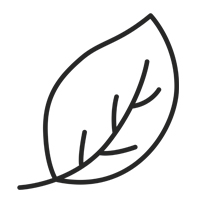
Hobby Ceramics Clays
SIO-2® Hobby Ceramics clays are especially suitable for beginners in the exciting world of ceramics, as they have a wide firing range between 1000 and 1260ºC.
All the clays contain 40% chamotte, which provides excellent behavior during drying and firing. The range includes two textures of chamotte: ultrafine, for pieces with fine details and a smooth surface, and rough, to work with more complex pieces or pieces with character.
Hobby Ceramics clays are available in white, black and tan brown, after firing.
Because of their extraordinary plasticity, they are also ideal for modelling and sculpture.

Natural clay

Excellent plasticity

Ceramic firing

Decoration with glazes
/SIO-2 HOBBY/Plato Joyas.jpg)
/SIO-2 HOBBY/Vajilla Zamora y Lanzarote 2-0.jpg)
/SIO-2 HOBBY/PA Vicente Rivera Corazones.jpg)
/SIO-2 HOBBY/Taza RelaxPaula Granada.jpg)
/SIO-2 HOBBY/Vajilla Zamora (SIO-2 HOBBY).jpg)
Hobby Ceramics Clay 5 kg
How to use it
Working with clay
It is advisable to knead the clay before starting your work. If in the course of the work the clay loses plasticity, it is enough to slightly moisten your hands to recover it. SIO-2 hobby ceramics clay has extraordinary plasticity for modelling and sculpture. It can also be moulded (we recommend plaster moulds) and thrown in a potter’s wheel (with chamotte of ultrafine texture). Solid or very thin-walled objects can be made with optimal results.
Discover more tips and useful tools on the Blog: "How to Work with Clay"
ATTENTION: if clay is used to wrap rigid interior supports, it is recommended to first cover the surface with paper or cloth. The water in the clay evaporates during the drying process and causes shrinkage that can lead to cracks. To avoid this negative effect, the solid surface is covered with a flexible and absorbent material to support the drying process of the clay. This will also absorb moisture inside the object and prevent cracks.
Discover more tips and useful tools on the Blog: "How to Work with Clay"
ATTENTION: if clay is used to wrap rigid interior supports, it is recommended to first cover the surface with paper or cloth. The water in the clay evaporates during the drying process and causes shrinkage that can lead to cracks. To avoid this negative effect, the solid surface is covered with a flexible and absorbent material to support the drying process of the clay. This will also absorb moisture inside the object and prevent cracks.
Drying
Once the object is finished, let it dry evenly, avoiding direct heat sources and drafts.
ATTENTION: during drying, the clay shrinks (5-7%). The more water the clay contains, the greater its drying shrinkage. Therefore, it is advisable not to add additional water to the clay, otherwise cracks may appear.
ADVICE: let the piece dry on an absorbent surface (ideally wood or plaster). In the case of non-absorbent surfaces (such as metal, plastic or glass), it is recommended to place the piece on a sheet of paper to facilitate the shrinkage of the clay during drying.
ATTENTION: during drying, the clay shrinks (5-7%). The more water the clay contains, the greater its drying shrinkage. Therefore, it is advisable not to add additional water to the clay, otherwise cracks may appear.
ADVICE: let the piece dry on an absorbent surface (ideally wood or plaster). In the case of non-absorbent surfaces (such as metal, plastic or glass), it is recommended to place the piece on a sheet of paper to facilitate the shrinkage of the clay during drying.
Finishing
Once dry, the object can be polished, carved or drilled.
Firing
SIO-2 hobby ceramics clay allows a wide firing range in a ceramic kiln between 1000ºC and 1260ºC, developing different ranges of colours depending on the firing temperature.
The object slightly reduces in size when fired due to firing shrinkage.
ADVICE: in the case of very large, solid or difficult-to-dry pieces, it is recommended to preheat slowly between 150 and 200ºC with the oven door slightly open (not hermetically sealed). This will favor the total evacuation of the drying moisture before firing.
The object slightly reduces in size when fired due to firing shrinkage.
ADVICE: in the case of very large, solid or difficult-to-dry pieces, it is recommended to preheat slowly between 150 and 200ºC with the oven door slightly open (not hermetically sealed). This will favor the total evacuation of the drying moisture before firing.
Glazing and decoration
SIO-2 hobby ceramics clay behaves well with conventional ceramic glazes, but it is recommended to use special ceramic hobby glazes, as they are very easy to use and allow a wide firing range that adapts perfectly to that of the clay. For an optimal finish, it is recommended to glaze once the piece has been previously fired (double firing).
It is recommended to use specific bibliography on techniques and tips for decoration with ceramic glazes.
It is recommended to use specific bibliography on techniques and tips for decoration with ceramic glazes.
Storage
Once the package is opened, wrap the remaining clay in plastic. If the clay has hardened during storage, but is still moist, it can be softened again by kneading it with moist hands.
During work interruptions, cover the object with plastic or a damp cloth.
ATTENTION: do not store at temperatures below 0ºC. If clay freezes, it loses its plasticity and becomes brittle.
During work interruptions, cover the object with plastic or a damp cloth.
ATTENTION: do not store at temperatures below 0ºC. If clay freezes, it loses its plasticity and becomes brittle.
FAQ's
What makes SIO-2 hobby ceramics clay different?
Compared to other potter's clays, SIO-2 hobby ceramics clay has extraordinary plasticity for modelling and sculpture; it contains 40% chamotte (grog), which allows exceptional behaviour during drying and firing, and has a wide firing range between 1000ºC and 1260ºC, which facilitates finishing and minimizes risks when firing in the kiln. In other words, it is an all-purpose clay.
How long does SIO-2 hobby ceramics clay take to dry?
The drying speed is equivalent to that of other natural clays, so the drying time ranges between 1 and 4 days depending on the size of the piece, its shape and the environmental conditions (temperature and ventilation, basically). In the case of large, solid pieces or pieces with flat or delicate shapes, it is recommended to delay drying, protecting the piece from drafts and direct heat sources.
Is it necessary to fire SIO-2 hobby ceramics clay?
If the objective of using the clay is to obtain a durable finished piece (decorated or not), then it is necessary to fire the clay in a ceramic kiln. However, due to its extraordinary plasticity, SIO-2 hobby ceramics clay is also used for modelling and sculpture without firing.
What is chamotte and what is it used for?
Chamotte, also known as grog, is clay calcined at 1450ºC and subsequently ground. It is used to stabilize clay during drying and firing. The large particle size favours the compaction of the clay, avoiding cracks and favouring the outgassing that occurs during firing. Chamotte is used instead of common sand because its ceramic behaviour is very similar to that of clay itself. In fact, chamotte is previously calcined (fired) clay, so that no dimensional stresses are generated within the piece during the entire firing process (heating and cooling).
Does clay expire?
Clay does not expire. If the packaging is not damaged, the original humidity is maintained for a minimum period of 2 years. If the clay dries out, it can be recovered with water.

/13310100.jpg)
/13320100.jpg)
/11220100.jpg)
/13620100.jpg)


